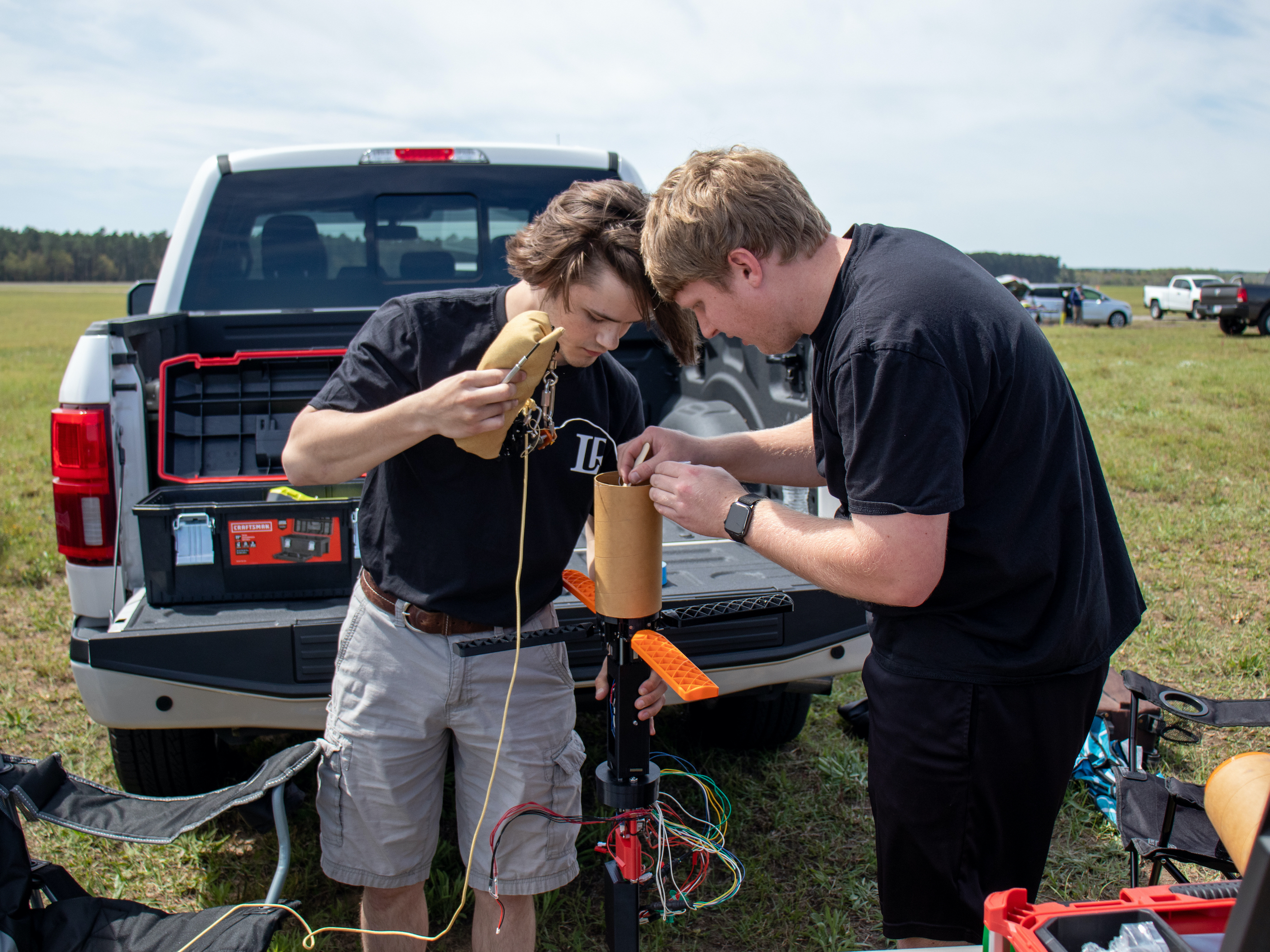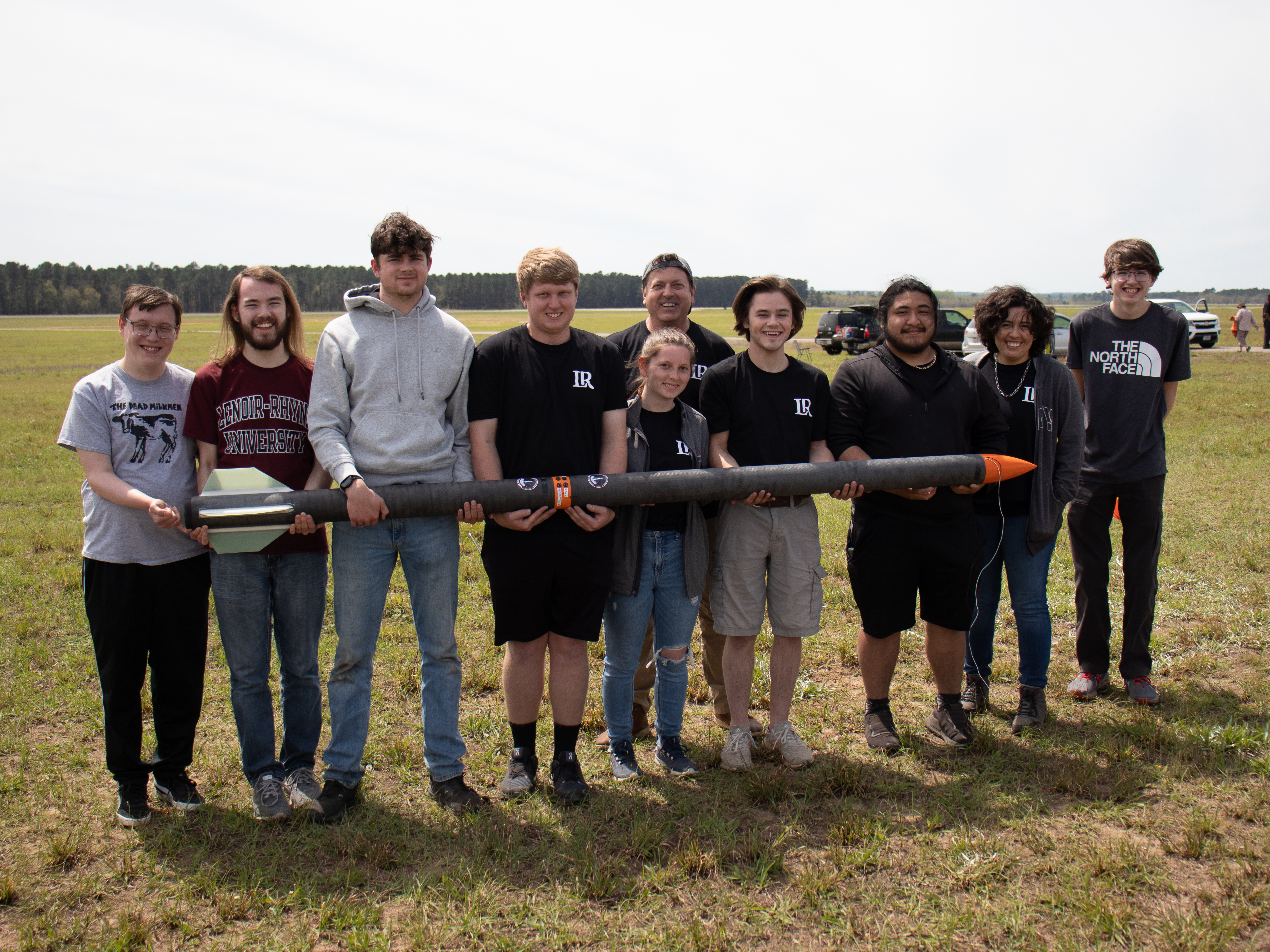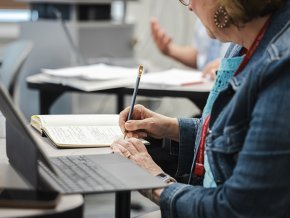Breaking through barriers
Rocket launch propels students’ experiences at LR

A team of engineering physics students has worked for months designing and testing a rocket and its payload, which they launched Saturday, April 2, at a military base in North, South Carolina. In one of its final tests before the summer competition at the Spaceport America Cup, held in late June in Las Cruces, New Mexico, the students launched a full-scale prototype rocket that broke the sound barrier. This smaller event attracted teams from Clemson University, the University of Tennessee, Embry-Riddle and The Citadel.
“We spent the morning prepping the rocket,” said Harrison Boston, senior in engineering physics. “With the complexity of the rocket we were building, we must do things analytically, step by step, or we might miss something that is mission critical. With a rocket that weighs 31 pounds, we recorded the highest flight at 11 and a half thousand feet.”
Boston traveled to the launch with seven fellow team members and two faculty members, including Doug Knight, assistant professor of engineering physics. As part of LR’s rocket team, Knight offers hands-on engineering experiences to any student beyond the university’s curriculum. This extracurricular activity provides students with relevant information to build on their technical and transferable skills.
“Before we go, everybody knows their job, and everyone knows what’s got to be done to make it a successful launch,” Boston said. “We have two sub-teams – a rocket team and a payload team.”
Knight explains the rocket sub-team is responsible for the rocket itself, such as parachute recovery, altimeter and motor. The payload sub-team is tasked with designing and building a payload that will carry out an experiment during rocket flight, at apogee – the highest point – and during descent.
Boston further explained that the team is aggressive in their approach to the rocket, implementing a motor that offers the proper thrust-to-weight ratio and simulators to predict and optimize the rocket.
“It was a great moment breaking the sound barrier,” Boston said. “On the launch, people were telling us they heard three events, which typically means a black powder charge has gone off, and that’s a bad thing. But the data showed that we broke the sound barrier, which caused sonic crackles that we heard on the ground.”
Boston said that because the payload launched so high, the team lost a visual of the rocket for about an hour.
“We finally got a little beacon of hope from one of the trackers on the rocket and were able to track it down,” Boston said. “We found the rocket near a tree and someone from the control tower saw the payload fall and hit a spot of water.”
 The team evaluated the altimeters on the drive home and reviewed the data. The first one reported 11,500 feet with a velocity to reach Mach 1.3 (916 mph). They checked the second altimeter, also noting 11,500 feet. The third confirmed the same measurement. The launch represents a major milestone for LR to compete at Spaceport America Cup this summer.
The team evaluated the altimeters on the drive home and reviewed the data. The first one reported 11,500 feet with a velocity to reach Mach 1.3 (916 mph). They checked the second altimeter, also noting 11,500 feet. The third confirmed the same measurement. The launch represents a major milestone for LR to compete at Spaceport America Cup this summer.
“The rocket was completely built in-house by our students,” Knight said. “Everything is custom to this rocket; nothing was outsourced. Students spend 20-30 hours preparing before a launch. We are just like an athletic team in many ways, except we don’t have NCAA rules, just FAA, safety and the competition rules. We are working hard to hopefully finish in the top 25 percent of teams in mainly Division I engineering programs.”
